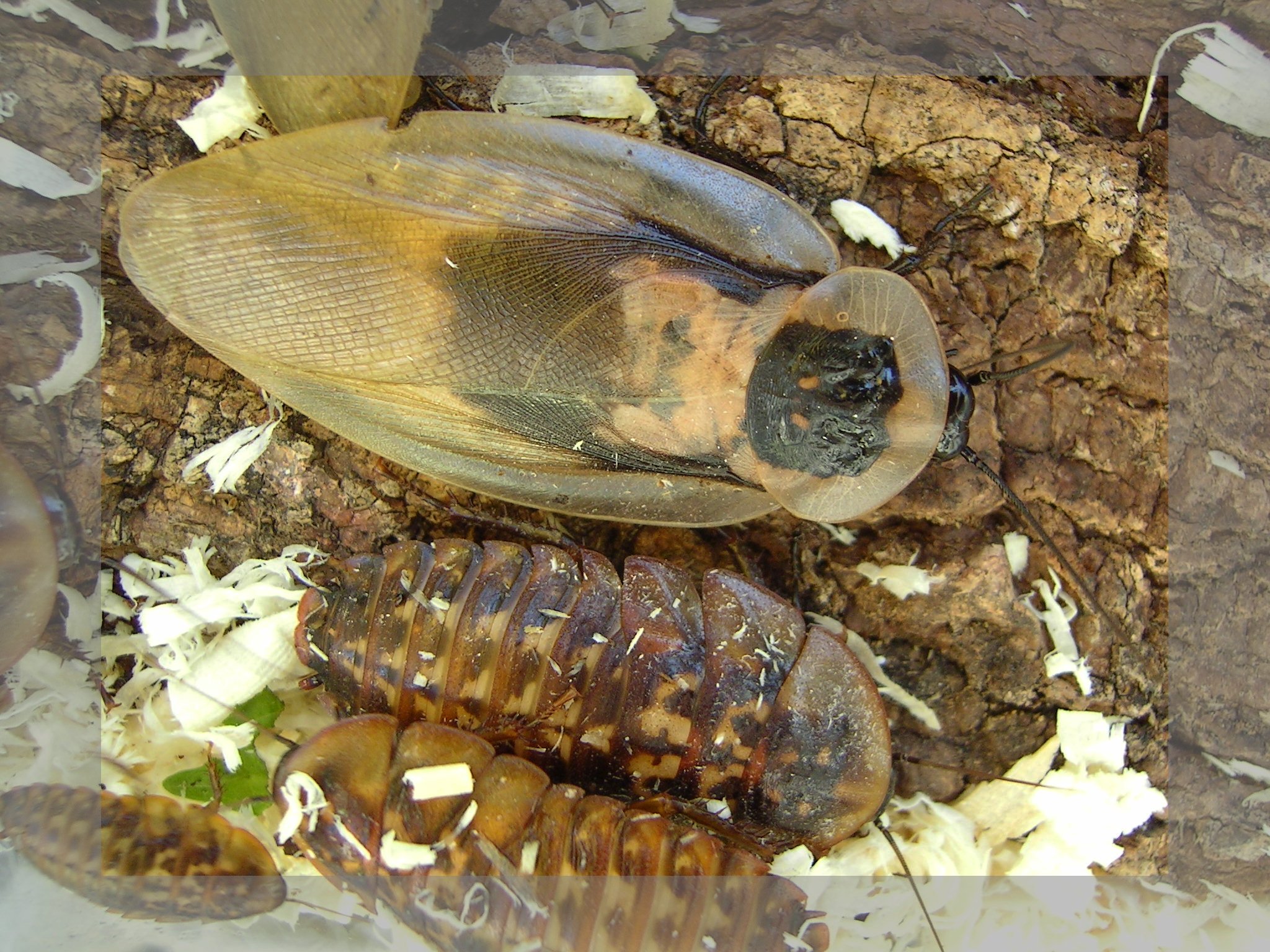- Exopterygota
Taxobox
name = Exopterygota
fossil_range=Carboniferous - Recent

image_width = 240px
image_caption =Death's head cockroach or brown-winged "Blaberus " hybrid Adult (above) and two immatures (note wing stubs)
regnum =Animal ia
phylum =Arthropod a
subphylum =Hexapoda
classis =Insect a
subclassis =Pterygota
infraclassis =Neoptera
superordo = Exopterygota
superordo_authority =
subdivision_ranks = Orders
subdivision =Notoptera (ice-crawlers & gladiators)Plecoptera (stoneflies)Embioptera (webspinners)Zoraptera (angel insects)Dermaptera (earwigs)Orthoptera (grasshopper s, etc)Phasmatodea (stick insects)Blattaria (cockroaches)Isoptera (termites)Mantodea (mantids)Psocoptera (booklice, barklice)Thysanoptera (thrips)Phthiraptera (lice )Hemiptera (true bugs)
For Extinct groups and possible future splits, see text.The Exopterygota, also known as Hemipterodea, are a
superorder ofinsect s of thesubclass Pterygota in theinfraclass Neoptera , in which the young resemble adults but have externally-developing wings. They undergo a modest change between immature and adult, without going through apupa l stage. The nymphs develop gradually into adults through a process of moulting.The Exopterygota are a highly diverse insect superorder, with at least 130,000 living species divided between 15 orders. They include
termite s,locust s,thrip s,lice andstick insect s, among many other types of insects.They are distinguished from the
Endopterygota (or Holometabola) by the way in which their wings develop. Endopterygota (meaning literally "internal winged forms") develop wings inside the body and undergo an elaborate metamorphosis involving a pupal stage. Exopterygota ("external winged forms") develop wings on the outside of their bodies without going through a true pupal stage, though a few have something resembling a pupa (e.g.,Aleyrodidae ).Ephemeroptera (mayflies) andOdonata (dragonflies and damselflies) also have gradual wing development, this being aplesiomorph ic trait. These two orders belong to theparaphyletic infraclassPaleoptera however, which is not included in Neoptera. As opposed to Neoptera, they cannot fold their wings over their back in thehorizontal plane, only vertically (asdamselflies do) if at all.ystematics
ITIS considers any subdivision of the Neoptera beyond the orders invalid, but this is almost universally rejected.
More recently, there is increasing debate about how to subdivide the Exopterygota, and the Neoptera in general. It is realized that some presumed Exopterygota may in fact be basal neopterans, making the superorder
paraphyletic , just as the Palaeoptera are now increasingly accepted to be among the winged insects in general.Here is a complete list of living and
Extinct orders of "exopterygotes", with some proposed subdivisions:Superorder Exopterygota "
sensu stricto "Verify source|date=August 2007
*Caloneurodea (Extinct)
*Titanoptera (Extinct)
*Protorthoptera (Extinct)
*Plecoptera (stoneflies)
*Embioptera (webspinners)
*Zoraptera (angel insects)
*Dermaptera (earwigs)
*Orthoptera (grasshopper s, etc)Proposed superorderDictyoptera
*Phasmatodea (stick insects - tentatively placed here)
*Notoptera (ice-crawlers & gladiators - tentatively placed here)
*Blattaria (cockroaches)
*Isoptera (termites)
*Mantodea (mantids)Proposed superorderParaneoptera
*Psocoptera (booklice, barklice)
*Thysanoptera (thrips)
*Phthiraptera (lice )
*Hemiptera (true bugs)
Wikimedia Foundation. 2010.
